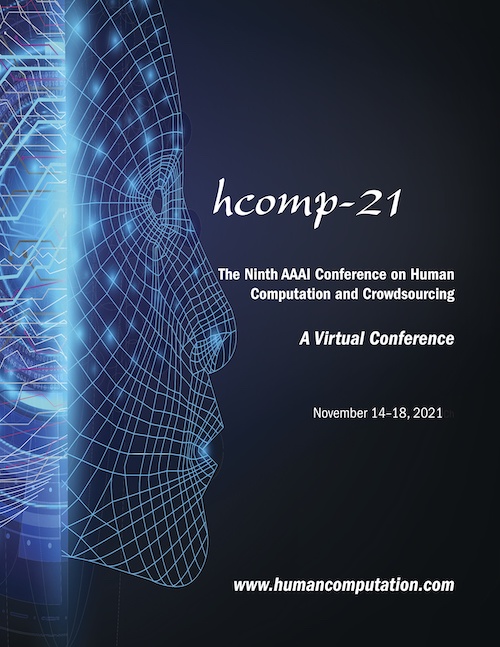Enhancing Image Classification Capabilities of Crowdsourcing-Based Methods through Expanded Input Elicitation
DOI:
https://doi.org/10.1609/hcomp.v9i1.18949Keywords:
Crowdsourcing, Binary Classification, Image Classification, Machine LearningAbstract
This study investigates how different forms of input elicitation obtained from crowdsourcing can be utilized to improve the quality of inferred labels for image classification tasks, where an image must be labeled as either positive or negative depending on the presence/absence of a specified object. Three types of input elicitation methods are tested: binary classification (positive or negative); level of confidence in binary response (on a scale from 0-100%); and what participants believe the majority of the other participants' binary classification is. We design a crowdsourcing experiment to test the performance of the proposed input elicitation methods and use data from over 200 participants. Various existing voting and machine learning (ML) methods are applied and others developed to make the best use of these inputs. In an effort to assess their performance on classification tasks of varying difficulty, a systematic synthetic image generation process is developed. Each generated image combines items from the MPEG-7 Core Experiment CE-Shape-1 Test Set into a single image using multiple parameters (e.g., density, transparency, etc.) and may or may not contain a target object. The difficulty of these images is validated by the performance of an automated image classification method. Experimental results suggest that more accurate classifications can be achieved when using the average of the self-reported confidence values as an additional attribute for ML algorithms relative to what is achieved with more traditional approaches. Additionally, they demonstrate that other performance metrics of interest, namely reduced false-negative rates, can be prioritized through special modifications of the proposed aggregation methods that leverage the variety of elicited inputs.Downloads
Published
2021-10-04
How to Cite
Yasmin, R., Grassel, J. T., Hassan, M. M., Fuentes, O., & Escobedo, A. R. (2021). Enhancing Image Classification Capabilities of Crowdsourcing-Based Methods through Expanded Input Elicitation. Proceedings of the AAAI Conference on Human Computation and Crowdsourcing, 9(1), 166-178. https://doi.org/10.1609/hcomp.v9i1.18949
Issue
Section
Full Archival Papers

